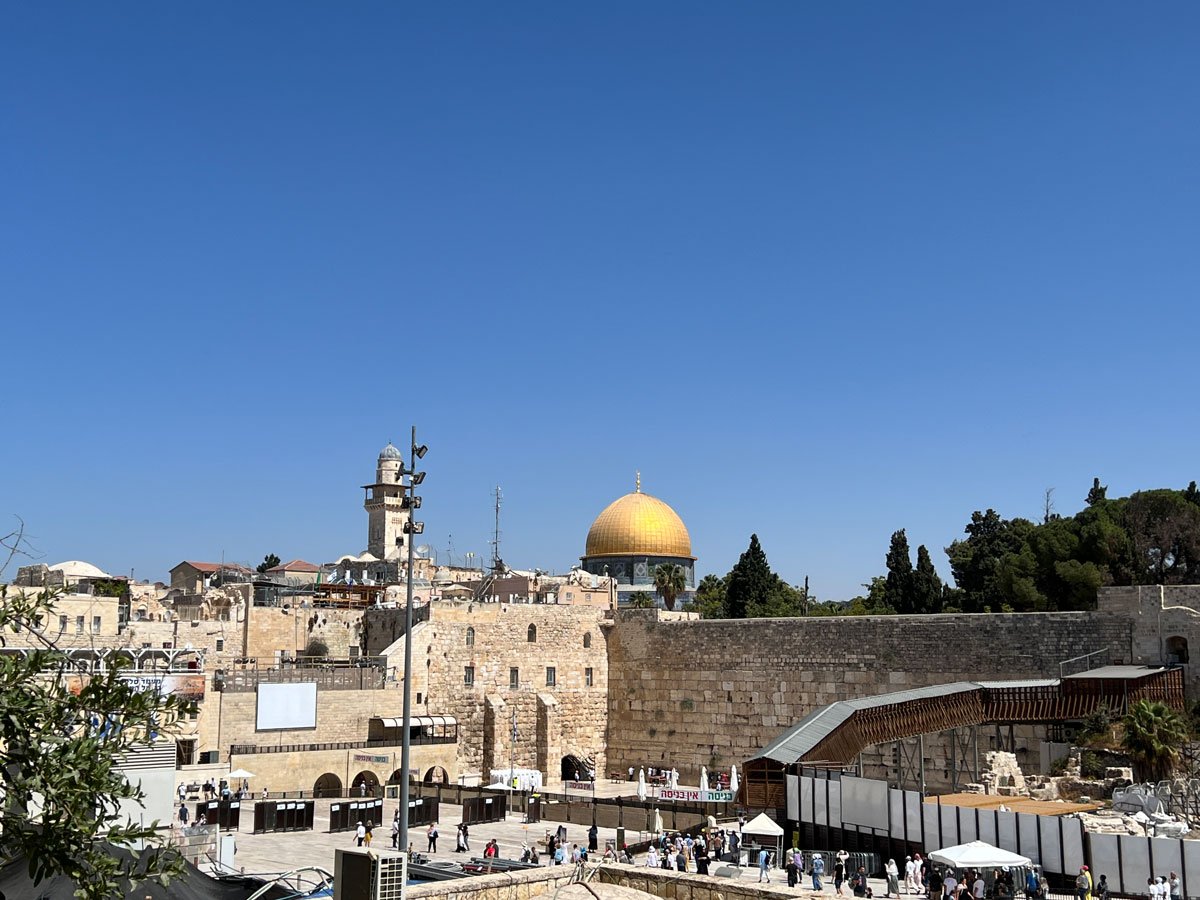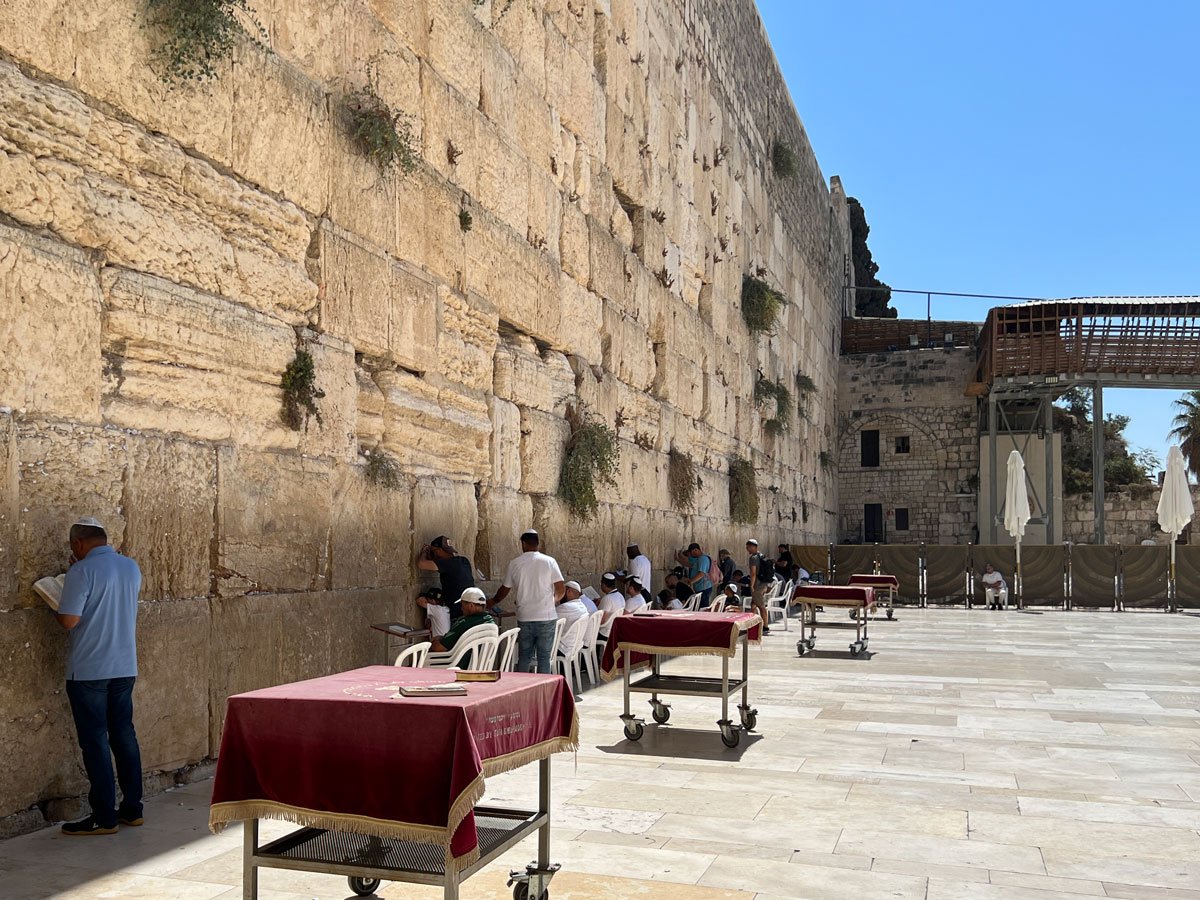Western Wall
The Western Wall known in the West as the Wailing Wall, and in Islam as the Buraq Wall is an ancient limestone wall in the Old City of Jerusalem
The Western Wall (Hebrew: הַכּוֹתֶל הַמַּעֲרָבִי often shortened to the Kotel or Kosel), known in the West as the Wailing Wall, and in Islam as the Buraq Wall is an ancient limestone wall in the Old City of Jerusalem.
The wall was originally erected as part of the expansion of the Second Jewish Temple begun by Herod the Great, which resulted in the encasement of the natural, steep hill known to Jews and Christians as the Temple Mount, in a huge rectangular structure topped by a flat platform, thus creating more space for the Temple itself, its auxiliary buildings, and crowds of worshipers and visitors.
In one of several varying Muslim traditions, it is the site where the Islamic Prophet Muhammad tied his winged steed, al-Buraq, on his Isra and Mi'raj to Jerusalem before ascending to paradise, and constitutes the western border of al-Haram al-Sharif ("the Noble Sanctuary"), or the Al-Aqsa compound.
The Western Wall's holiness in Judaism is a result of its proximity to the Temple Mount. Because of the Temple Mount entry restrictions, the Wall is the holiest place where Jews are permitted to pray, though the site of the Holy of Holies, the most sacred site in the Jewish faith, lies behind it. The original, natural, and irregular-shaped Temple Mount was gradually extended to allow for an ever-larger Temple compound to be built at its top. This process was finalized by Herod, who enclosed the Mount with an almost rectangular set of retaining walls, made to support the Temple platform and using extensive substructures and earth fills to give the natural hill a geometrically regular shape. On top of this box-like structure, Herod built a vast paved platform that surrounded the Temple. Of the four retaining walls, the western one is considered closest to the former Holy of Holies, which makes it the most sacred site recognized by Judaism outside the previous Temple Mount platform.
Just over half the wall's total height, including its 17 courses located below street level, dates from the end of the Second Temple period, and is commonly believed to have been built by Herod the Great starting in 19 BCE, although recent excavations indicate that the work was not finished by the time Herod died in 4 BCE. The very large stone blocks of the lower courses are Herodian, the courses of medium-sized stones above them were added during the Umayyad period, while the small stones of the uppermost courses are of more recent date, especially from the Ottoman period.
The term Western Wall and its variations are mostly used in a narrow sense for the section traditionally used by Jews for prayer; it has also been called the "Wailing Wall", referring to the practice of Jews weeping at the site over the destruction of the Temples. During the period of Christian Roman rule over Jerusalem (ca. 324–638), Jews were completely barred from Jerusalem except on Tisha B'Av, the day of national mourning for the Temples, and on this day the Jews would weep at their holy places. The term "Wailing Wall" was thus almost exclusively used by Christians, and was revived in the period of non-Jewish control between the establishment of the British Mandate in 1920 and the Six-Day War in 1967. The term "Wailing Wall" is not used by religious Jews, and increasingly not by many others who consider it derogatory.
Whilst the wall was considered Muslim property as an integral part of the Haram esh-Sharif and waqf property of the Moroccan Quarter, a right of Jewish prayer and pilgrimage existed as part of the Status Quo. This position was confirmed in a 1930 international commission during the British Mandate period.
The earliest source mentioning this specific site as a place of Jewish worship is from the 17th century.
UNESCO World Heritage Site
Part of a World Heritage Site declared by UNESCO in 1981



